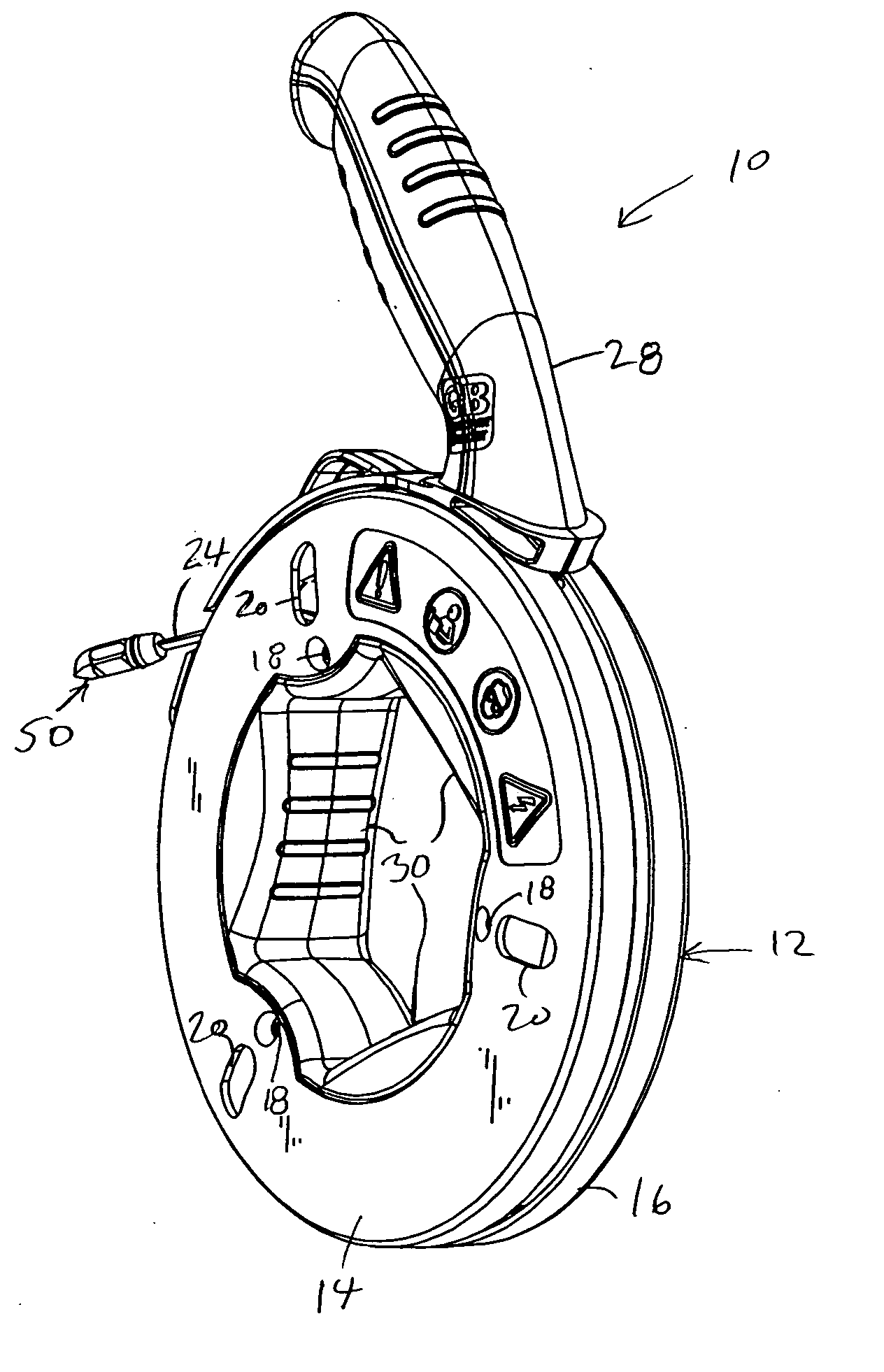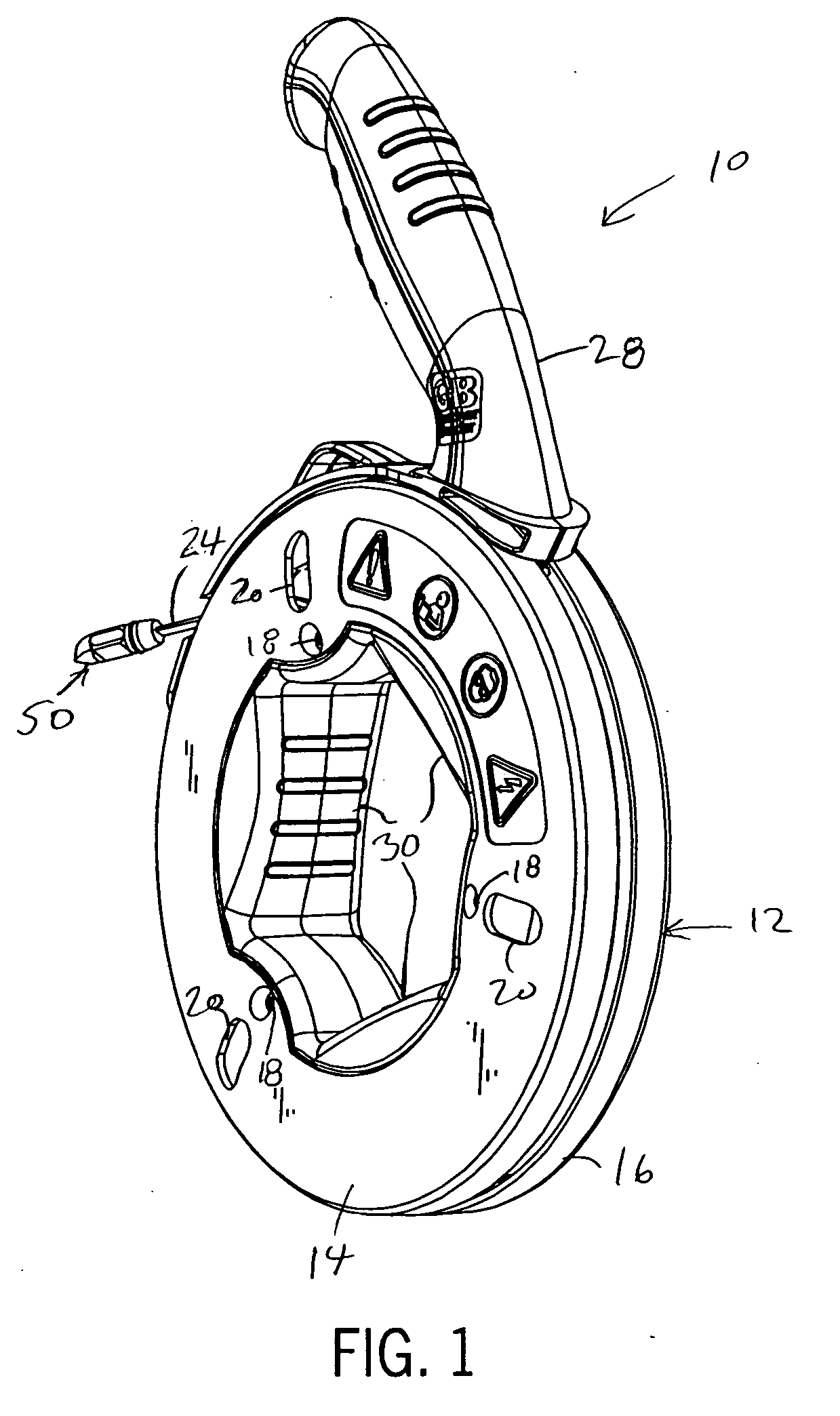Non-conductive fish tape
a non-conductive, fish tape technology, applied in the direction of cable installation apparatus, cable installation installation, electrical equipment, etc., can solve the problems of less steerability of the tape, increase the thickness of the tape, and not be suitable for use near live circuits with open contacts, etc., to achieve the effect of improving the adhesion, reducing the cost, and increasing the lubricity
- Summary
- Abstract
- Description
- Claims
- Application Information
AI Technical Summary
Benefits of technology
Problems solved by technology
Method used
Image
Examples
Embodiment Construction
[0030] The drawings referenced herein illustrate a preferred version of a fish tape reel assembly 10. This reel assembly is preferred because of its durability and many ergonomic, and is described in detail in a co-pending PCT application filed on Aug. 6, 2004, entitled “Ergonomic Fish Tape” which claims priority to U.S. provisional application Ser. No. 60 / 493,819, filed on Aug. 8, 2003, the entire disclosure of which is incorporated by reference herein for its teaching on the construction, assembly and use of a preferred reel assembly for use with the fish tape of the present invention.
[0031] Briefly then, with reference to FIGS. 1-3, the reel assembly 10 includes a reel housing 12 having two annular housing parts 14 and 16 joined together by three angularly spaced fasteners 18, which are aligned with windows 20, to define an annular cavity 22 in which a length of fish tape 24 is wound. The reel housing parts 14 and 16 also define an annular groove 26, ringing the annular cavity 2...
PUM
 Login to View More
Login to View More Abstract
Description
Claims
Application Information
 Login to View More
Login to View More - R&D
- Intellectual Property
- Life Sciences
- Materials
- Tech Scout
- Unparalleled Data Quality
- Higher Quality Content
- 60% Fewer Hallucinations
Browse by: Latest US Patents, China's latest patents, Technical Efficacy Thesaurus, Application Domain, Technology Topic, Popular Technical Reports.
© 2025 PatSnap. All rights reserved.Legal|Privacy policy|Modern Slavery Act Transparency Statement|Sitemap|About US| Contact US: help@patsnap.com



